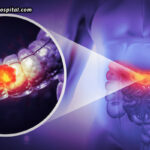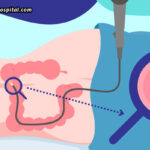What is Achalasia cardia?
Achalasia cardia is a disease of esophagus or food pipe. The incidence is 1.5 per 1 lac population. Cases of achalasia cardia may be rising. Men and women are affected with equal frequency. Most cases occur between age 25 to 60 years.
Achalasia cardia can be associated with a genetic disorder named triple-A syndrome where the patient may also have abnormal function of adrenal glands and may have an absence of tears in the eyes.
What are the symptoms of achalasia cardia?
Achalasia cardia presents with a history of dysphagia (give reference of our dysphagia blog), regurgitation, chest pain, and many times weight loss. Symptoms of achalasia cardia are usually long-lasting. Many patients have symptoms of difficulty swallowing for many years. Patients having complained of regurgitation or vomiting can be misdiagnosed as GERD or Gastritis if not properly evaluated.
How is Achalasia cardia diagnosed? What is the cause?
Achalasia cardia is diagnosed with endoscopy or barium test most commonly. Typically, the food pipe /esophagus is filled with fluid or food content and there is hold up of food content at the level of the junction between food pipe and stomach.
The cause of Achalasia cardia is not known. It is a disease where the valve between the esophagus and stomach fails to open when food reached there. Due to this patient has difficulty in swallowing, regurgitation, vomiting, and chest pain. There is also a problem in peristalsis (movement of food pipe muscles that pushes the food into the stomach). The peristalsis movement is absent in this patient. In long term, the food pipe becomes dilated and very big in size.
What tests should be done to confirm the diagnosis of achalasia cardia?
As discussed, a gastroenterologist /endoscopist usually makes a diagnosis on endoscopy. If the diagnosis was made on barium test patient should undergo endoscopy. Endoscopy is also important to look for complications like esophageal ulcers, fungal infection, cancer within the achalasia esophagus. It is also important to look for another possible diagnosis like fungal infections of the esophageal wall or tumors involving lower esophagus.
Once the diagnosis is made by a gastroenterologist/ endoscopist then the patient should undergo esophageal manometry test by a specialist gastro doctor to see types of achalasia cardia. There are three types and the treatment response and treatment type can be decided by manometry.
An esophageal manometry test is also helpful for patients who have no or partial response after one or other types of treatment for achalasia cardia.
There are three types of achalasia cardia.
Type 1 – has loss of esophageal peristalsis with failure of the opening of power esophageal sphincter
Type 2- has increased in esophageal pressure with failure of the opening of lower esophageal symptoms
Type 3 – is a spasm in esophageal muscle with failure of the opening of lower esophageal sphincter. This group of patients often have chest pain as a symptom.
What are the treatment options for achalasia cardia?
Treatment options for achalasia cardia are:
Endoscopic pneumatic balloon dilatation – endoscopic dilatation is a reasonably effective treatment for type 2 achalasia cardia. However, efficacy for type 1 and 3 is inferior to POEM or surgery.
It is associated with risk of perforation and reflux related to the procedure.
POEM (per oral endoscopic myotomy) – With the advent of third space endoscopy achalasia cardi can be treated with endoscopic surgery named POEM or per oral endoscopic myotomy. As the name suggests it involves endoscopic cutting of muscles through a submucosal tunnel. It is as effective as surgery for type 1 and 2 achalasia. For type 3 POEM may give better results as we can do long myotomy (cutting of muscles) to relieve muscle spasm in type 3 achalasia.
POEM is associated with very few perioperative complications. Pneumothorax pneumoperitoneum, bleeding and rarely postoperative leak can be seen. GERD can occur after POEM surgery; however few patients require medication to control GERD.
Surgery: Achalasia cardia has been treated traditionally with surgical myotomy along with fundoplication. Advantage of surgery is ant reflux procedure done along with myotomy. However, for type 3 achalasia doing long myotomy is difficult. Hospital stay is longer as compared to POEM. Postoperative complications like infection, bleeding, mediastinitis and perforation are possible.
Botulinum toxin and pharmacotherapy– botulinum toxin inje
Prognosis and overall outcome:
Overall response rate of surgery and POEM for treatment of achalasia cardia is more than 95 percent. Most patients can eat well immediately after the surgery and they gain weight. Patients should be monitored for symptoms of reflux and dysphagia.
Few patients continue to have dysphagia specially those with sigmoid esophagus and open LES. Here the dysphagia may be due to motility issue and these are difficult patients to treat.








